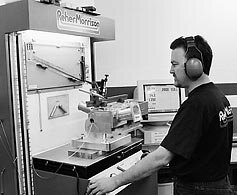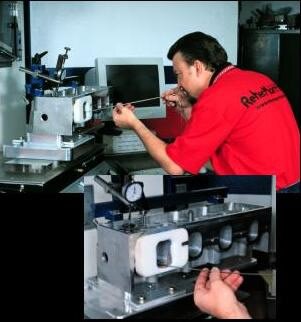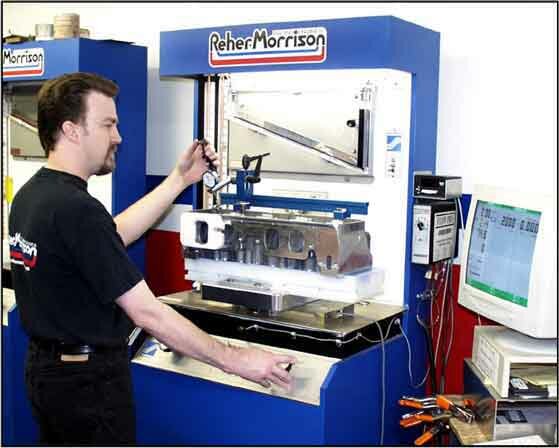




GenAI for Video Editors: Upscaling, Rotoscope, and Cut Lists
If you work in video editing, you know how time-consuming tasks like upscaling, rotoscoping, and making cut lists can be. With generative AI, you’re facing new tools that not only speed things up but also change how you approach every stage of post-production. You might be curious about how these features really stack up in actual workflows—or how they could fit into yours next.
The Evolution of AI Tools in Video Editing
As AI tools have developed, they've fundamentally impacted video editing by automating various time-consuming tasks including scene detection, transcoding, and color grading.
This automation allows editors to devote more time to narrative development rather than technical tasks. The speed of video processing has increased due to advancements in rotoscoping, which facilitate animation and visual effects, and the efficiency of object removal processes has also improved significantly.
In addition, automated transcription and subtitling enhance editing efficiency, contributing to the accessibility of videos. AI-based upscaling technologies further improve visual quality, which is particularly relevant in maintaining high standards across diverse projects.
These technological advancements illustrate a trend towards more comprehensive AI tools that assist video editors by streamlining workflows and enhancing creative possibilities.
AI-Powered Video Upscaling: Enhancing Footage Resolution
AI-powered video upscaling offers a methodical approach to enhancing footage resolution by utilizing advanced algorithms to analyze content. Unlike traditional upscaling methods, which often result in a loss of clarity and detail, AI tools can improve visual quality while minimizing artifacts.
Applications such as VideoProc AI allow users to elevate the resolution of low-quality videos to higher standards, including 4K and 8K formats, without significant compromise on visual integrity.
These AI upscaling solutions typically feature intuitive interfaces, enabling users to navigate various functionalities with relative ease. They support a wide array of video formats, making them applicable for diverse projects and workflows.
Additionally, built-in performance assessment tools provide a way to preview improvements in resolution prior to final export, helping users make informed decisions about their output quality.
Streamlining Rotoscoping With Generative AI
Rotoscoping is widely recognized as a labor-intensive aspect of video editing. However, the advent of generative AI technologies is changing the landscape of this process by automating various components. AI tools can efficiently detect edges, create masks, and manage intricate tracking tasks, thus simplifying the workflow for editors.
Several software platforms, such as Runway ML, Boris FX Mocha Pro, and Silhouette, incorporate machine learning to enhance the efficiency of rotoscoping. These tools enable video editors to allocate more time to creative visual effects rather than spend it on time-consuming masking tasks.
Furthermore, the integration of these AI solutions with major editing platforms facilitates a smoother automation process, which can lead to improved video quality while minimizing the duration required for manual intervention.
The increasing reliance on AI for rotoscoping tasks reflects a larger trend in the video editing industry, emphasizing the potential for technological advancements to enhance productivity and creative output.
Automated Cut List Generation for Efficient Workflows
Automated cut list generation is a valuable tool for video editors working with extensive raw footage. This technology utilizes AI algorithms to identify scene transitions, detect dialogue, and highlight significant actions within the footage, which can substantially reduce the time spent on manual logging.
Platforms such as Adobe Premiere Pro and Final Cut Pro have incorporated these features, allowing users to customize cut lists according to their editing preferences and narrative style.
The implementation of AI-generated cut lists can enhance workflow efficiency, particularly for editing teams. These lists serve as a common reference point, facilitating improved communication and coordination throughout the post-production process.
Furthermore, by streamlining the initial editing stages, automated cut lists may assist teams in adhering to strict project deadlines. Such advancements indicate a shift towards more efficient editing practices, leveraging technology to enhance productivity in the industry.
Comparative Analysis of Leading AI Video Editors
Building on the efficiency gains from automated cut list generation, it's important to analyze how leading AI video editors support contemporary workflows.
Tools such as VideoProc AI and AVCLabs AI focus on enhancing video quality, utilizing advanced algorithms to upscale resolution to 8K.
In contrast, platforms such as Adobe Premiere Pro and DaVinci Resolve incorporate features like automated transcription, smart cuts, and instant color grading, which contribute to more efficient editing processes.
Many of these AI video editing tools operate on subscription-based models, providing access to advanced functionalities—such as automated rotoscoping and various AI tools—for both casual users and industry professionals.
AI Solutions for Audio Cleanup and Enhancement
High-quality audio is essential for effective video content. AI-driven audio cleanup tools facilitate the removal of unwanted background noise, ensuring that dialogue and important sounds are clear and intelligible. Software like Adobe Premiere Pro offers features for background noise reduction and audio customization, allowing for precise adjustments to achieve the desired audio quality.
Additionally, platforms such as ElevenLabs.io provide advanced voice cloning technology, which can be utilized for creating custom voiceovers, enhancing the storytelling aspect of videos.
Descript’s text-based audio editing capabilities enable users to make quick enhancements to audio content, including fine-tuning voices and performing clean edits.
By employing these AI tools, content creators can significantly reduce the time spent on audio cleanup, allowing them to allocate more time to the creative aspects of video production that contribute to the overall narrative.
This efficiency is particularly beneficial for maintaining high standards in video content without compromising on audio quality.
Integrating AI With Existing Post-Production Software
The post-production landscape is undergoing significant changes, with many established editing platforms incorporating AI functionalities to enhance workflow efficiencies. Notable software such as Adobe Premiere Pro and DaVinci Resolve have integrated AI tools that aim to streamline various tasks commonly performed by video editors.
For instance, features such as automated scene detection and smart cuts can expedite the process of creating rough edits. Intelligent color grading tools offer enhanced precision in visual refinement, while AI-enhanced rotoscoping features make the masking process more accessible and accurate.
Additionally, automated transcription capabilities allow for the quick generation of subtitles, thus improving accessibility for a broader audience.
The continuous integration of AI into these platforms ensures that users can take advantage of the latest advancements in technology, maintaining a competitive edge within the industry. Overall, these developments indicate a shift toward more efficient and precise editing processes, aligning with evolving standards in post-production work.
Cloud-Based Collaboration and Media Management
As post-production teams increasingly operate in distributed environments, cloud-based collaboration and media management platforms have become essential tools for video editors. These platforms facilitate a more efficient workflow through features such as streamlined media management, tagging, and transcoding capabilities.
For instance, Strada.tech offers advanced media management services that assist in organizing and accessing video projects effectively. Additionally, Runway.ml provides real-time updates and collaborative editing tools, allowing multiple users to work on content simultaneously, which can enhance efficiency within teams.
Adobe Premiere Pro has also integrated cloud-based features, including automatic syncing to address version control issues. This functionality can improve productivity by ensuring that team members are working with the most current version of the project.
Through these cloud-based solutions, teams can access, manage, and edit media files from virtually any location, supporting the flexibility needed to meet production deadlines in a fast-paced environment.
These developments reflect a shift towards more collaborative and accessible post-production processes in the video editing industry.
Creative and Ethical Considerations in AI-Assisted Editing
AI tools significantly enhance video editing workflows, particularly in tasks such as rotoscoping and upscaling. However, their incorporation raises important questions regarding authorship and the extent to which machine-generated results can replicate human creativity and intent.
Ethical guidelines surrounding data usage in AI training are crucial to maintaining artistic integrity and aligning with industry standards. As editors utilize AI technologies, they must carefully consider the implications of these tools on their work.
While AI can provide efficiency and speed, it's essential to ensure that the unique artistic vision of the creator remains central to the editing process.
The discussion surrounding AI's role in creativity is ongoing, influencing how professionals approach issues of authenticity and responsible practices in their workflows. Balancing the advantages of AI assistance with a commitment to ethical standards is fundamental in navigating the evolving landscape of video editing.
Future Trends in AI for Video Post-Production
Recent advancements in artificial intelligence are significantly transforming the video post-production landscape. The introduction of AI features in video editing tools is expected to automate intricate processes such as upscaling, rotoscoping, and the generation of cut lists. These AI algorithms are capable of context-aware editing, allowing editors to focus more on narrative development while the software handles technical aspects.
Moreover, the integration of cloud-based workflows will facilitate real-time collaboration among video production teams, streamlining the editing process. AI will also contribute to automated scene detection and provide intelligent suggestions for transitions, which can enhance efficiency in the post-production phase.
The development of user-friendly interfaces and competitive pricing is likely to make these advanced editing tools accessible to a broader range of editors, thereby democratizing access to high-level post-production capabilities.
As these technologies continue to evolve, they're expected to play a vital role in shaping the future of video editing, while also raising questions related to creativity and ethics in the industry.
Conclusion
With generative AI, you’re not just speeding up your video editing—you’re unlocking new creative possibilities. Upscaling boosts your footage to stunning resolutions, rotoscoping becomes a breeze, and automated cut lists keep your workflow sharp and efficient. By integrating these tools with your existing software, you’ll collaborate more easily and focus on your creative vision. As AI advances, you’ll find even more ways to elevate your edits and push the boundaries of what’s possible.
